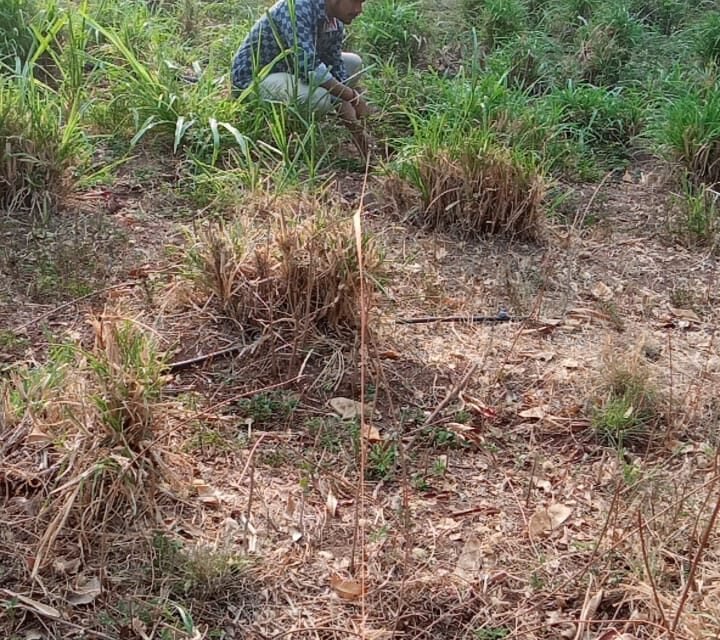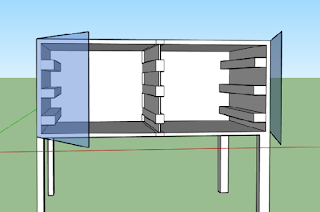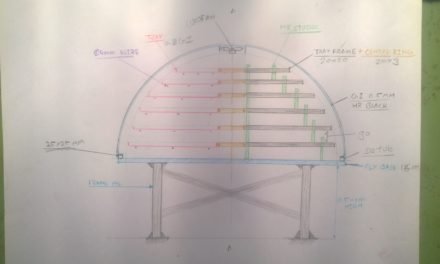Introduction:
Now a days, water is becoming rare source in the world. Reuse of water is very essential for saving of water in early days. For that recycling of grey water and black water Projects are useful for saving of water.
Grey water: Grey water is a waste water which contains used water like washing machine, kitchen, bathroom, basin waste. Since grey water is reflection of household activities, its main characteristics strongly depend on factors such as cultural habits, living standard, type of household chemicals used etc.
The composition of greywater varies greatly, reflecting the lifestyle of the residents and the choice of household chemicals for laundry, bathing, etc. Greywater typically contains high concentrations of easily degradable organic material, such as fat and oil from cooking, and ten sides and other residues from soap and other detergents.
Objectives:
- To find out available grey water at Vigyan Ashram campus.
- To calculate available Farm land at Vigyan Ashram.
- Selection of appropriate irrigation method on grey water system.
- To design and give estimation of cost economy of selected layout of irrigation system.
12/04/2022 TO 17/04/2022
Material and Methods:
Total calculation of grey water system in Vigyan Ashram:
There are total 6 Tanks of grey water system in Ashram. Two of them collects kitchen waste water, next two tanks are installed behind the ladies hostel and last two are installed at back side of boys hotel. In that 5 tanks are of intermediate bulk container (IBC) type and 1 is constructed by using cement concrete material.
Capacity of Tanks: The capacity of ibc tanks is about 1000 liters and capacity of cement concrete tank is about 1800 litres.
Total availability of grey water:
According to research and daily observations average water requirement of one person is about 65 to 75 liters day. In that average requirement for bathroom and kitchen is about 25 litres/day and 300 litres/day respectively and for washing clothes is about 300 litres/week.
1. Ladies hostel:
Total number of persons = 20
Water required for washing clothes = 1200 litres/week
Water required for bathroom = 500 litres/day
2. Boys hostel (DIC):
Water required for washing clothes = 900 litres/week
Water required for bathroom = 375 litres/day
3. Boys hostel (DBRT):
Water required for washing clothes = 3000 litres/week
Water required for bathroom = 1250 litres/day
4. Hostel room (Side of Ladies hostel):
Water required for washing clothes = 360 litres/week
Water required for bathroom = 150 litres/day
5. Kitchen:
Water required for washing dishes/plates = 300 litres/day
Total collection of grey water on daily and weekly basis:
1. Daily collection:
From bathroom = 500 + 375 + 150 + 1250 = 2275 litres/day
From kitchen = 300 litres/ day for 100 persons
Collection of washing 1 dish at Vigyan Ashram kitchen (practically) = 1.3 litres/person/dish

2. Weekly collection:
From washing clothes = 1200 + 900 + 360 3000 = 5460 litres/week
18/04/2022 TO 22/04/2022
Calculation of total land irrigated on grey water system:
- Ladies Hostel:

Length = 21.3 m
Breadth = 19.5 m
Total Area = 21.3 × 19.5 = 415.35 m2
The irrigation is done for this land is by using drip irrigation method or flood irrigation method.
- Food Lab:

The irrigation is done for this land is by directly through the pipes.
Length =11.3 m
Breadth = 14 m
Total Area = 11.3 × 14 =158.2 m2
Available land for irrigation on grey water system:
- DIC Boys hostel:

Length =10.5 m
Breadth = 14.5 m
Total Area = 10.5 × 14.5 =152.25 m2
Total availability of land for irrigation purpose = 415.35 + 158.2 + 152.25
= 725.8 m2
= 0.18 Acre
= 7 Guntha
Experiment on Pan Evaporation losses:
Experiment is done by using tray :
dimensions of tray:
Inner length = 45 cm
Inner breadth = 32 cm
Depth = 8 cm
Experiment is failed due to rain.
23/04/2022
Another trial of experiment is taken for calculation of losses.
About 9 litres of water is filled in tray. The depth of water in tray is 8 cm at 10.30 am.
24/04/2022
After 24 hours and by calculation water in tray is about 7.95 litres and depth of water is about 6.5 cm
Therefore, evaporated water is about 1.05 litres.
25/04/2022 – 26/04/2022
Table No. 1: Pan Evaporation losses data
| Sr. No. | Date | High Temperature | Low Temperature | Water filled in tray (Litres) | Available water in tray (after 24 hours) (Litres) | Evaporation losses (litres) |
| 1. | 22/04/2022 | 39 | 22 | 8 | – | |
| 2. | 23/04/2022 | 39 | 22 | 9 | 7.95 | 1.05 |
| 3. | 24/04/2022 | 37 | 25 | 5 | 2.95 | 2.05 |
| 4. | 25/04/2022 | 39 | 22 | 5 | 3.6 | 1.4 |
| 5. | 26/04/2022 | 38 | 22 | 5 | 3.3 | 1.7 |
03/05/2022 TO 12/05/2022
Calculation of Loss On Drying (LOD) of soil:
Loss on Drying (LOD) :- It is the process to measured water present in sample when the sample is drying under a certain condition.
Formula: % LOD = Weight of sample before dry – Weight of sample after dry / Weight of sample before dry* 100
Experiment No. : 1
Initial weight of 1st sample = 25.82 gm
Initial weight of 2nd sample = 26.12 gm
Table No. 2 : Calculation of LOD of soil (A)
| Sr. No. | Time | Sample 1 (gm) | Sample 2 (gm) |
| 1. | 11:10 | 24.52 | 24.78 |
| 2. | 11:50 | 24.33 | 24.57 |
| 3. | 12:30 | 24.29 | 24.59 |
| 4. | 01:13 | 24.25 | 24.57 |
| 5. | 01:52 | 24.25 | 24.57 |
| 6. | 02:10 | 24.11 | 24.50 |
| 7. | 03:15 | 24.11 | 24.50 |
| 8. | 03:50 | 24.11 | 24.50 |
LOD (%) = 6.62 %
Experiment No. : 2
Initial weight of 1st sample = 25.11 gm
Initial weight of 2nd sample = 25.12 gm
Table No. 3 : Calculation of LOD of soil (B)
| Sr. No. | Time | Sample 1 (gm) | Sample 2 (gm) |
| 1. | 12:25 | 25.11 | 25.12 |
| 2. | 12:55 | 24.61 | 24.38 |
| 3. | 01:25 | 24.57 | 24.30 |
| 4. | 02:05 | 24.52 | 24.25 |
| 5. | 02:35 | 24.50 | 24.25 |
LOD (%) = 2.42 %
Experiment No. : 3
Initial weight of 1st sample = 26.98 gm
Initial weight of 2nd sample = 26.09 gm
Table No. 4 : Calculation of LOD of soil (C)
| Sr. No. | Time | Sample 1 (gm) | Sample 2 (gm) |
| 1. | 11:45 | 23.91 | 22.42 |
| 2. | 12:20 | 23.43 | 22.32 |
| 3. | 01:00 | 23.29 | 22.24 |
| 4. | 02:30 | 23.25 | 22.21 |
| 5. | 03:05 | 23.24 | 22.21 |
LOD (%) = 14.88 %
Delta = After irrigation to land – Before irrigation to land/ Time interval in days
= 6.62 – 2.42/ 2
= 6.23 %
Calculation of total water required to irrigate the land area:
According to research paper and data 1 litres of soil is equal to 1.11 kg
• For girl’s hostel
Depth of soil = 6 inch = 15 cm = 0.15 m
Total available area of land = 415 m2
Volume = Depth of soil × land area
= 0.15 × 415
= 62.25 m3
= 62250 litres
62250 × 1.11 = 69097.5 kg
62097.5 × 0.06 = 4145.85 kg
= 4145.85 litres/day
Total water required to irrigate 415 m2 area = 4145.85 litres/day
• For boy’s hostel
Total available area of land = 152.25 m2
Volume = Depth of soil × land area
= 0.15 × 152.25
= 22.83 m3
= 22837.5 litres
22837.5 × 1.11 = 25349.6 kg
25349.6 × 0.06 = 1520.9 kg
= 1520.9 litres/day
Total water required to irrigate 152.25 m2 area = 1521 litres/day
• For food lab
Total available area of land = 158.2 m2
Volume = Depth of soil × land area
= 0.15 × 158.2
= 23.73 m3
= 23730 litres
23730 × 1.11 = 26340.3 kg
26340 × 0.06 = 1580.41 kg
= 1581 litres/day
Total water required to irrigate 158.2 m2 area = 1581 litres/day
Selection of irrigation system :
To choose an irrigation method, the farmer must know the advantages and disadvantages of the various methods. He or she must know which method suits the local conditions best.
The suitability of the various irrigation methods, i.e. surface, sprinkler or drip irrigation, depends mainly on the following factors:
- Natural conditions
- Type of crop
- Type of technology
- Previous experience with irrigation
- Require labor inputs
- Cost and benefits
Natural conditions:
The natural conditions such as soil type, Climate, water quality and availability, have the following impact on the choice of an irrigation method:
Table No. 5: Selection parameters for selecting irrigation system
| Slope: | Sprinkler or drip irrigation are preferred above surface irrigation on steeper or unevenly sloping lands as they require little or no land levelling. An exception is rice grown on terraces on sloping lands. |
| Climate: | Strong wind can disturb the spraying of water from sprinklers. Under very windy conditions, drip or surface irrigation methods are preferred. In areas of supplementary irrigation, sprinkler or drip irrigation may be more suitable than surface irrigation because of their flexibility and adaptability to varying irrigation demands on the farm. |
| Water availability: | Water application efficiency (see Annex 4, step 8) is generally higher with sprinkler and drip irrigation than surface irrigation and so these methods are preferred when water is in short supply. However, it must be remembered that efficiency is just as much a function of the irrigator as the method used. |
| Water quality: | Surface irrigation is preferred if the irrigation water contains much sediment. The sediments may clog the drip or sprinkler irrigation systems. If the irrigation water contains dissolved salts, drip irrigation is particularly suitable, as less water is applied to the soil than with surface methods. Sprinkler systems are more efficient that surface irrigation methods in leaching out salts. |
Type of crop:
General layout of the system and specially lateral and emitter spacing will depend upon the type of crops to be grown in that area, as different crops have different pant spacing and irrigation requirements. The probable cropping pattern for the minimum of next five years should be taken into consideration, while designing the system.
Name: Napier grass / Elephant grass
Spacing: Row to row spacing = 90 cm
Crop to crop spacing = 60 cm
Type of technology:
The type of technology affects the choice of irrigation method. In general, drip and sprinkler irrigation are technically more complicated methods. The purchase of equipment requires high capital investment per hectare.
Previous experience with irrigation:
The choice of an irrigation method also depends on the irrigation tradition within the region or country. Introducing a previously unknown method may lead to unexpected complications. It is not certain that the farmers will accept the new method. The servicing of the equipment may be problematic and the costs may be high compared to the benefits.
In Vigyan Ashram there is use of different irrigation systems like flood, drip and sprinkler irrigation. Recently there is flood irrigation system is used for grey water system.
Design and estimation of cost economy of selected layout of irrigation method:
By using different parameters which are used for selection of irrigation system and experiments like pan evaporation losses and loss on drying (LOD) calculation I suggest drip irrigation system on grey water system for fodder crop.
Design steps for drip irrigation system:

Schematic view of drip irrigation system:

Design calculation of drip irrigation system:
Survey of the field:
Area – 415 m2
Crop – Napier grass
Water source – IBC tanks = 2 = 2000 litres
Plant spacing – 0.9 m x 0.6 m
- Crop water requirement = 6 mm/day
Area of bed = wetted area x length of bed
= (80/100) x 9
= 7.2 m2
Water required = 7.2 x 6/1000
= 0.0432 m3
= 43.2 litre
= 0.012 lps - Selection of emitter = Online
Emitter spacing = 0.6 m
No. of emitters/bed = 9.75/0.6
= 16.25 Say 17
Discharge of emitter = 43/17
= 2.52 lph - Selection of lateral:
Head loss = K(Q/C)1.852D
-4.871LF
= 1.21 x 1010 x (0.012/140)1.852 x (12-2.2)-4.871 x 9.75 x 0.36
= 0.018
Head loss in lateral is 0.018 m which is less than 1.2 m. Hence 12 mm lateral is sufficient.
Lateral on one side of sub-main = 21.3/0.9
= 23.66 Say 24
Total no. of laterals = 24 x 2
= 48
Total lateral length = 48 x 9.75
= 468 m - Selection of sub-main:
Sub-main length = 21.3 m
Discharge of lateral = 17 x 4
= 68 lph = 0.018 lps
Discharge of sub-main = 0.018 x 24 x 2
= 0.864 lps
Head loss = 1.21 x 1010 x (0.864/150)1.852 x (32-2.4)-4.871 x 21.3 x 0.36
= 0.44
Head loss is less than 0.9. Hence, sub-main of 32 mm is sufficient. - Selection of mainline:
Length of mainline = 27 m
Discharge of mainline = 0.864 lps
Head loss = 1.21 x 1010 x (0.864/150)1.852 x (40-2.4)-4.871 x 27 x 0.36
= 0.17m - Selection of pump:
Total head of pump = (suction head + delivery head + operating pressure + venturi loss + filter loss + fitting loss + mainline loss)
= 12+10+5+2+4+0.62 = 33.17 m
HP = (flow rate(lps) x head(m)) / (75 x motor efficiency x pump efficiency)
= (0.864 x 33.17) / (75 x 0.75 x 0.80)
= 0.63 x 1.1
= 0.70 HP
⁓ Say 1 HP
Table no. 6: Costing of drip irrigation system
| Item | Quantity | Rate | Total price (Rs.) |
| Emitters 4lph | 816 | 4.09 | 3337.44 |
| 12 mm lateral | 1443 m | 10.5 | 15151.5 |
| End cap | 48 | 2 | 96 |
| Take off | 48 | 3 | 144 |
| Grommet | 48 | 1.5 | 72 |
| Sub-main PVC 75 mm 21.3m | 1 pipe (21.3 m) | 70 | 1491 |
| Ball valve 75 mm | 1 | 750 | 1500 |
| Flush valve 75 mm | 1 | 90 | 180 |
| NRV valve | 1 | 350 | 350 |
| Air valve | 1 | 200 | 200 |
| Main line 90 mm 27 m | 1 pipe (27 m) | 90 | 2430 |
| Hydro cyclone filter 3” | 1 | 4000 | 4000 |
| Sand filter 3” | 1 | 25000 | 25000 |
| Pump 1 HP | 1 | 4000 | 4000 |
| Installation charges | 1500/acre | 500 | |
| Total | 58451.94/- |
Result:
- The total available grey water on Vigyan Ashram is about 2575 litres/day from daily collection and 5460 litres/week from weekly collection.
- Total availability of land under farming is 7 Guntha which is about 0.18 acre.
- By using experiment of pan evaporation losses, the evaporated water is about 1.05 litres and delta of loss on drying (LOD) of soil is 6%.
- On the basis of experiments, drip irrigation system is suitable on grey water system for fodder crops.
- Total cost economy of drip irrigation on grey water is about Rs. 58451.94/-.
Conclusion:
- Recycling of grey water is very useful in irrigation where average rainfall is low and area which comes in drought region.
- Water requirement in summer season is very drastic, the whole irrigation system is shut down on Vigyan Ashram campus, so for irrigation purpose storage of grey water is important.
- Requirement of fodder crop in Vigyan Ashram is at moderate level, so on grey water system production is done in summer season.
- So, by using drip irrigation system on grey water which is beneficial for fodder crops and we can save normal water for the use of other purposes.





